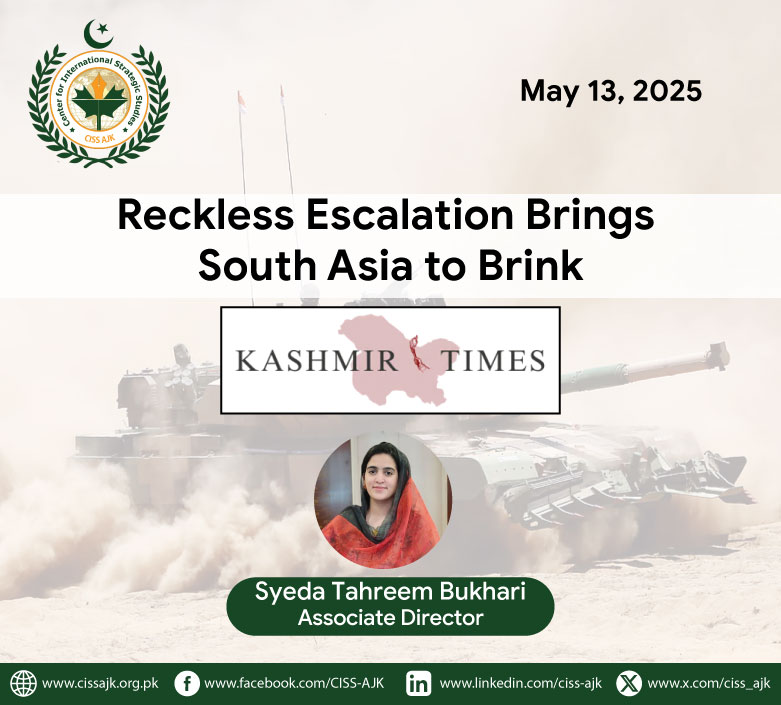Nuclear-armed neighbours edge dangerously close to war as political issues remain unresolved and military provocations intensify.
The tragic Pahalgam incident in Indian-administered Kashmir on April 22, which claimed the lives of 26 civilians, has once again pushed South Asia to the brink of a devastating conflict.
Rather than pursuing a transparent investigation, India’s response has followed a now familiar pattern—swift escalation without evidence, heightening the risk of war between two nuclear-armed nations.
This trajectory of confrontation echoes previous crises. In 2016, the Uri attack that killed 19 Indian soldiers led to India’s so-called “surgical strikes.”
Similarly, the 2016 attack on the Pathankot airbase and Pulwama explosion, where 40 soldiers died, resulted in Indian aerial aggression against Pakistan, violating its airspace and territorial integrity. In both instances, India unilaterally blamed Pakistan, despite Islamabad’s offers for impartial, international investigations—offers which New Delhi consistently rejected.
The same playbook is being followed in the aftermath of the Pahalgam tragedy. India dismissed Pakistan’s call for an independent probe and instead launched a chain of retaliatory actions that have only inflamed tensions.
These included the suspension of the Indus Waters Treaty, the closure of the Wagah-Attari border, the expulsion of Pakistani diplomatic staff, and the imposition of visa restrictions.
Pakistan, in response, suspended the Simla Agreement, closed its airspace, expelled Indian diplomats, and sealed the Wagah border, further escalating the diplomatic standoff.
The situation dramatically worsened with India’s recent missile strikes on Pakistani territory—marking the first significant military aggression during official peacetime.
The Indian attacks targeted six locations, including Muzaffarabad (the capital of Pakistan-administered Kashmir), Kotli, and Bagh. In Punjab province, Ahmedpur Sharqia, Muridke, and Shakargarh were hit, resulting in 31 fatalities and over 60 injuries. A hydroelectric dam was also reportedly damaged.
In response, Pakistan claims to have shot down five Indian fighter jets and a drone, signalling its readiness to retaliate. These escalations are bringing the region dangerously close to the unthinkable—nuclear conflict.
With every provocation, the strategic stability of South Asia is further eroded. The current trajectory is not merely a bilateral issue—it is a global concern. The world cannot afford to ignore the growing peril of nuclear confrontation in this volatile region.
The responsibility now lies squarely with the international community. It must rise to the occasion and play a proactive role in resolving the longstanding political disputes between India and Pakistan—particularly the issue of Jammu and Kashmir, which lies at the heart of this conflict. Durable peace demands not only de-escalation but also sustained and uninterrupted dialogue, grounded in fairness and aimed at addressing the aspirations of the affected populations.
Both countries must be urged to step back from the precipice and return to the negotiating table. Dialogue must not be treated as a favour extended to the other party—it is a necessity for survival in a region housing over a fifth of the world’s population and two nuclear arsenals.
Strategic restraint must replace rhetorical belligerence, and diplomacy must triumph over military adventurism. Anything less will be a betrayal—not just of the people of South Asia, but of global peace.
(*Syeda Tahreem Bukhari is Associate Director at the Centre for International Strategic Studies. She holds an MPhil in Peace and Conflict Studies from the National Defence University, Islamabad.)



